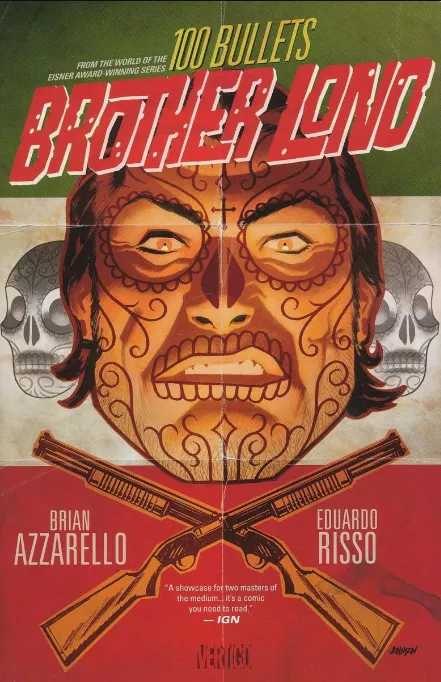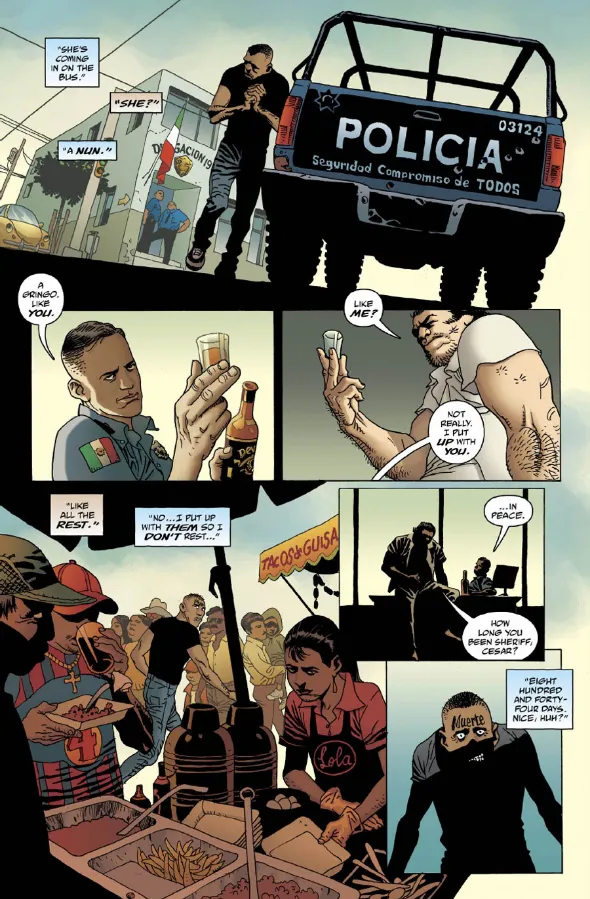
Readers longing for the duo Brian Azzarello and Eduardo Risso, whose most famous work is the comic 100 bullets, do not need to be specially encouraged to read the spin-off of this cult series. Has Brother Lono come close to the level of the original?
For those who expected the continuation of the 100 rounds in the comic published by Egmont, the information immediately - in this respect, reading Brother Lono will be disappointing. The enigmatic ending of the series still remains so, and we move in the story three years ahead, with the setting in Mexico and with Lono, the most sinister and grotesque hero in his brutality, who this time has to fight primarily with his demons...
Lono is one of the last Minutemen to make it to the end of the series. It's actually a surprise, because his fate in one of the frames seemed to be a doomed, so the information about the spin-off at the beginning may be surprising. However, if you think about it, it was this hero, with a contempt for life and death, paradoxically deserving to survive. Strangely enough, in Brother Lono he is only a shadow of himself. It seems almost unbelievable that it is Lono that we see in the role of a silent and gentle, but still imposing man who atone for his sins by working for a church orphanage in Mexico. However, since the central character of the comic is this Minuteman, we can be sure that it will not lack scenes of violence.

With the beginning of the spin-off, its specter constantly circles our hero, provoking him to action, which he successfully resists. Finally, we come to the conclusion that maybe Lono has indeed changed, but what we are really waiting for is to remove the mask and see the hero in action, especially since there are terrifying things going on around him. Apart from Lono, the collective hero of this comic book is the Mexican cartel, which successively gets in his way without realizing that following this hero's imprint is like stepping on an armed mine waiting for a victim.
With each Azzarello and Risso book we read, we miss the 100 Naboi plot less and less, and we get drawn more and more into the brutal world of drug counts. Most importantly, we enter the plot on the terms of a scriptwriter, who once again shows the narrative possibilities without making anything easier for the reader. Before we know the plot meanders of intrigue, we are already somewhere in the middle of the album, and the closer to the end, the hotter it gets. How will it end for Lono? Will he be faithful to his new image? What about some of the side characters who will definitely not be able to make it to the end of the story?
To sum up - the duo Risso and Azzarello came out quite successful spin-off. Although they separated themselves with a fairly thick line from the main plot of 100 Naboi, they managed to keep the spirit of the original. This was due to the aforementioned Azzarello narrative, which, however, would not exist without what Eduardo Risso did in the graphic layer. He is certainly one of the most talented cartoonists who not only recreate the writer's ideas, but also enrich the whole story in an extraordinary way, again having fun with the way of framing, thanks to which we often follow the plot from various perspectives. Let's add the colors by Patricia Mulvihill, with a slightly different color palette than in 100 cartridges. The orange color stands out here in particular, visible both on the cover and in the final acts of the story, when everything is bathed in fire. Does this mean Lono will finally show her true face? Be sure to check it out.

